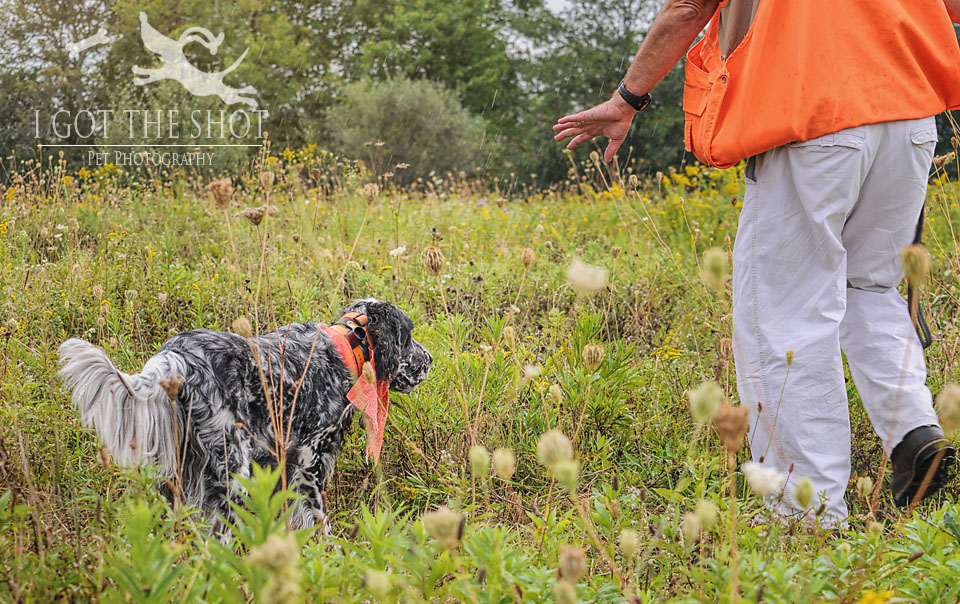I enjoy taking our Setters for walks in the fields behind our house. Most of the time they are on a long line. I can only trust a few of them off lead, as only a few of them respond to recall. The hardest task is having to walk a leashed Setter and then try to take photographs. It's much easier when they can be off line, running and hunting--nose to the ground. It wasn't until this past weekend that I had the chance to photograph bird dogs doing what bird dogs are meant to do (besides taking up the entire couch). I just wanted to take a moment to reflect on that experience and the many factors that influenced the type of photo obtainable during the event.
My main objective was to stay within a few feet of this judge at all times, and to mimic his actions. If he knelt down, I knelt down. If he flattened himself to the ground, I flattened myself to the ground. This was to ensure my safety during the shooting aspect of the challenge, and to also not get in the way of the participants as they sought to gain points achieving each aspect of the event.
This was also constraint number one on shooting photographs. There were many times when I found myself seeing a lovely shot, but not in any position to capture it. At this point, as a photographer, you have to resign yourself to the fact that you need to achieve the best shots you can, based on this large constraint, and go with the flow.
Factoring in the time of day (between 11:00 a.m. and 3:00 p.m.) and a run of good weather we had been having, for the first few entrants, the sun was like a ball of light shining in the desert. Photography in bright sun is not one of my favorite things, but you have to learn to work with the sun, instead of against it. I also had to resign myself to the fact that the color scheme for the day was gold, golden, yellow, bright green, and blaze orange, with black and white or orange and white Setters in between.
Another issue with this type of photography is the tall switch grass and other brush the dogs are traveling through. Cameras will decide to focus on the blades of grass in front of the dog, instead of on the dog itself. I use back button focusing more than relying on shutter focus, and I found this to be ideal for this situation.
You also need to get a feel for the dog and their habits in terms of working the field. Some dogs will only hold a soft point (not your classic point, and they may not hold it long). Most of the time, however, dogs are constantly moving, so you have to set your speed to be able to capture that movement. With the sun as bright as it was for most of the day, I was able to keep my speed settings between 1000 and 1600.
Sometimes I got really lucky and a dog would stay out of the tall grass for a bit. When they did, I would hope to be in a good spot to catch them running a path.
All-in-all, it was a great experience. I learned so much about the sport itself, and even more about my abilities in the field. I now have a long list of things to practice. You only learn by doing.
I shot the entire day with a 70-300mm Nikon lens. I then came home and took a long nap.







 RSS Feed
RSS Feed